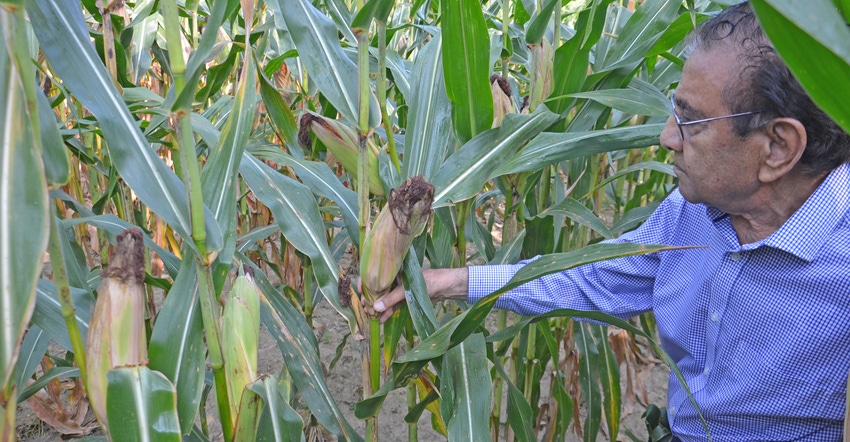
“Uniform emergence” has become a buzzword among those seeking high corn yields. It’s often a topic at seed company meetings. Machinery companies like Precision Planting discuss it because they offer equipment that can help planters place seed at uniform depth.
In fact, Precision Planting is launching SmartDepth for 2021. This add-on product builds on 20/20 monitors and SmartFirmers, which send information about soil moisture in the furrow to the cab. SmartDepth allows the operator to change planting depth on the go so seeds have an even better shot of winding up in a similar environment, increasing the odds for uniform emergence. Time will tell if it or similar products become standard equipment.
Related: Pinpoint cause of late-season corn lodging
In the Corn Watch ’20 emergence plots, where plants emerging late were flagged with different colors depending on which day they emerged, there was a difference in ear weight based on emergence. It was a demonstration, not a replicated trial. The difference wasn’t as striking as you might think.
“There was definitely a trend toward smaller ear size for plants that emerged three or more days after the first plants,” says Dave Nanda, director of genetics for Seed Genetics Direct, sponsor of Corn Watch ’20. “But if plants emerged within the first two days, there was no significant difference.”
Enter plant spacing variable
What was striking, Nanda says, was the variation in ear size among plants that emerged more than two days late. “Some ears were very small, almost nubbins,” he says. “Yet some were as good as any ears in the field.”
When Nanda looked more closely, he picked up a pattern. Ears on delayed-emerging plants tended to be normal if the plants were separated from their neighbors. If spacing was normal or closer than normal and a plant came up late, there was a greater chance the ear would either be a nubbin or have just a few kernels.
“Plant spacing is still extremely important,” Nanda says. “We need to remember that when thinking about how we achieve high yields.”
Plant spacing isn’t all tied to the planter, he adds. Most seed corn is tagged at about 95% emergence. That means one in 20 won’t emerge, leaving a gap. Over the past two seasons, by digging where plants are missing at the V5 stage or earlier, Nanda has discovered that most often, a seed was there and didn’t germinate.
Other factors, including insect damage early or wildlife damage later, can take out plants. Both spacing and emergence can also vary row by row, especially on larger planters with central-fill hoppers and pinch rows.
Nanda notes that agronomists quantified the effects of poor plant spacing decades ago, way before people zeroed in on the possible yield effects of delayed emergence.
Bob Nielsen, a Purdue University Extension corn specialist, found that too much variation in plant spacing within rows could reduce yields by 2 to 5 bushels per acre, depending upon the degree of variability. Although some other research in the northern Corn Belt doesn’t show that trend, Nielsen expanded his work with a 2004 trial where he again found that variable spacing could take several bushels per acre off the top.
“I believe it’s as important as uniform emergence,” Nanda says. “Take a look at factors that might affect plant spacing while you can make changes for 2021.”
About the Author(s)
You May Also Like




